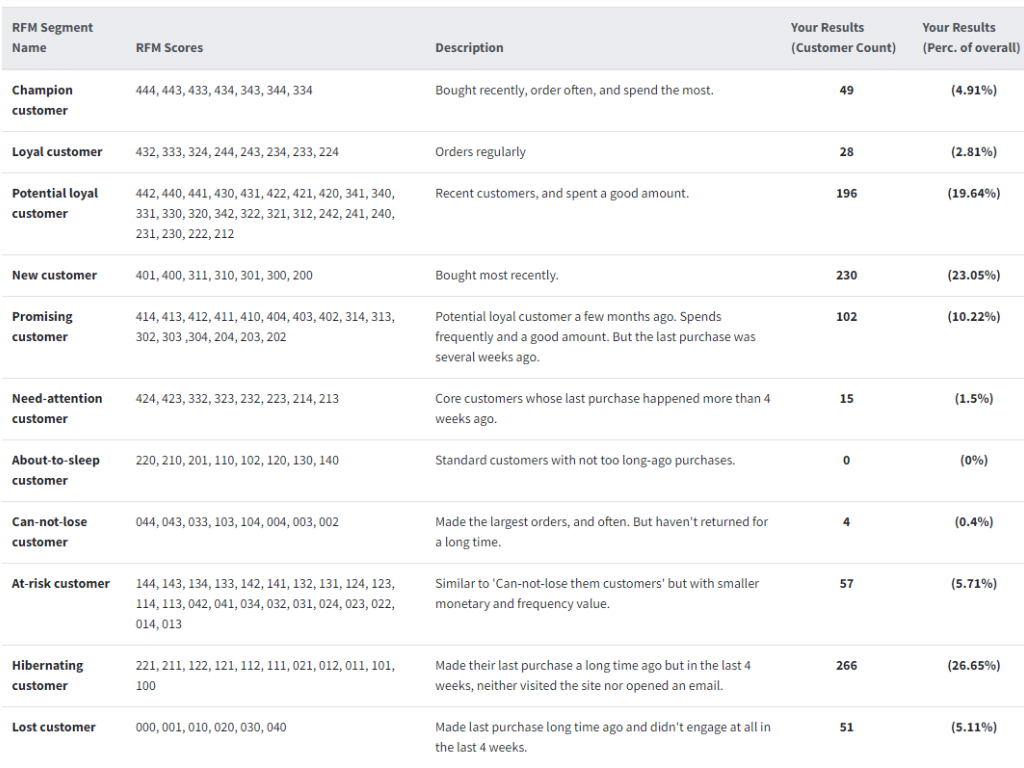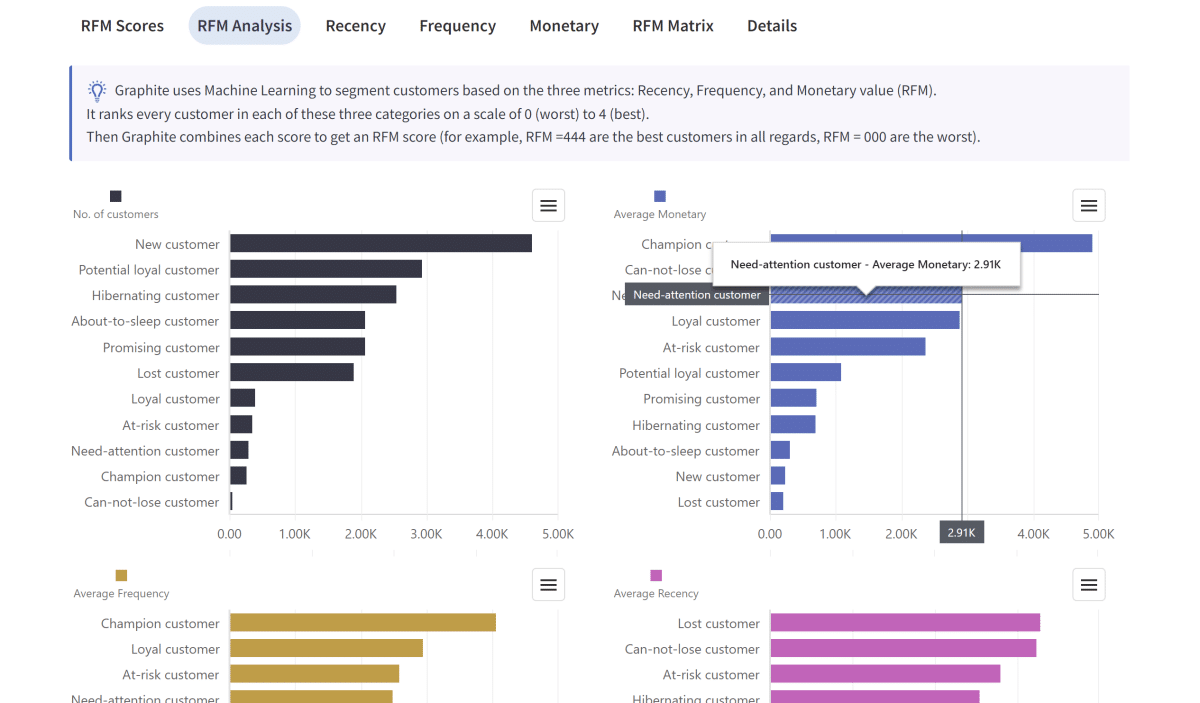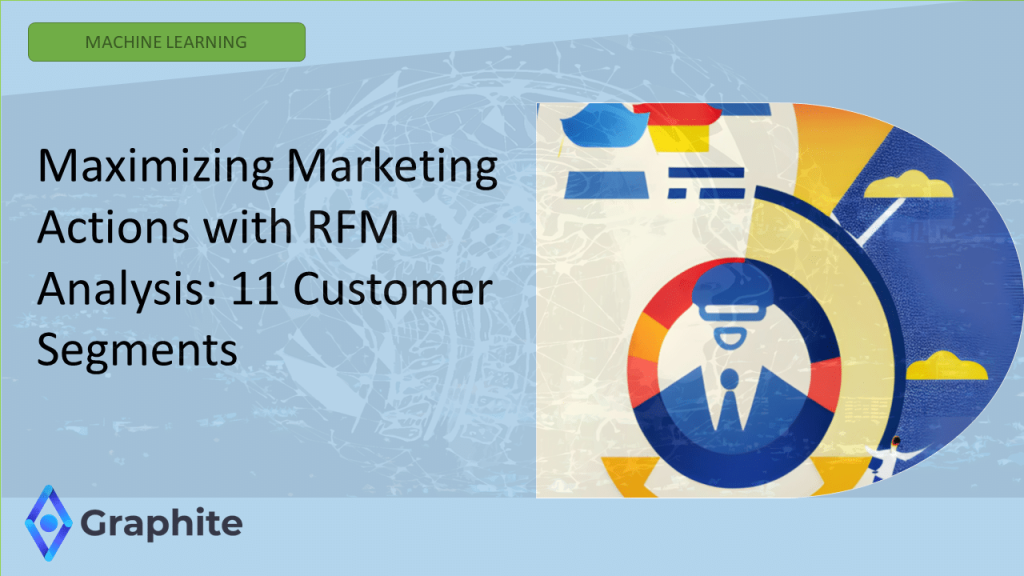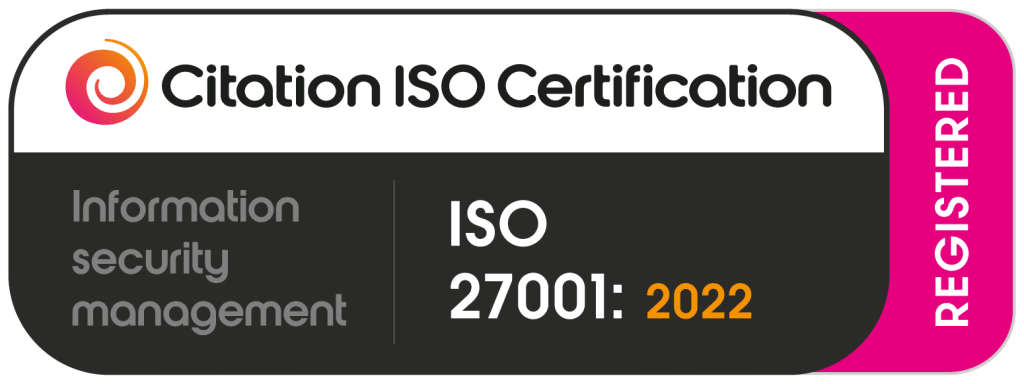Introduction
Businesses always need an edge in understanding their customers. RFM analysis is a powerful tool that provides insight into customer behavior by examining three key metrics: Recency, Frequency, and Monetary Value. By utilizing RFM analysis, businesses can identify various customer segments and tailor their marketing efforts accordingly. In this blog post, we’ll take a closer look at each customer segment and discuss how to optimize marketing strategies to maximize results.
- Introduction
- Overview of RFM Analysis Customer Segments
- Champion Customer
- Loyal Customer
- Potential Loyal Customer
- New Customer
- Promising Customer
- Need-Attention Customer
- About-to-Sleep Customer
- Can-Not-Lose Customer
- At-Risk Customer
- Hibernating Customer
- Lost Customer
- Marketing Actions for Each RFM Segment
- Conclusion
Overview of RFM Analysis Customer Segments
Champion Customer
Champion customers are the gold standard in any business. They’ve made recent purchases, ordered frequently, and spent the most. Catering to their needs and preferences is essential for maintaining a strong relationship and driving growth.
Loyal Customer
Loyal customers are the backbone of your business. They order consistently and contribute significantly to your revenue. It’s important to nurture these relationships to ensure they remain committed to your brand.
Potential Loyal Customer
Potential loyal customers are a group worth watching. They’ve recently engaged with your brand and spent a considerable amount, showing great potential for long-term loyalty if nurtured correctly.
New Customer
New customers have just discovered your brand and made their first purchase. By providing a positive experience and highlighting the benefits of your products or services, you can foster long-lasting relationships.
Promising Customer
Promising customers once demonstrated great potential but have recently become less active. A targeted win-back campaign may be just what they need to rekindle their interest in your brand.
Need-Attention Customer
Need-attention customers were once core customers, but their last purchase happened more than four weeks ago. Re-engagement efforts and special offers can help bring them back into the fold.
About-to-Sleep Customer
These customers haven’t been active for a while but still show potential. Incentives for returning customers and customer feedback surveys can help re-engage this group.
Can-Not-Lose Customer
Can-not-lose customers were once valuable assets, making large and frequent purchases. However, they’ve been inactive for some time. Reactivation campaigns and personalized follow-ups can help regain their loyalty.
At-Risk Customer
At-risk customers share similarities with can-not-lose customers but have smaller monetary and frequency values. Offering discounts and highlighting new products can entice them to return.
Hibernating Customer
Hibernating customers made their last purchase a long time ago and haven’t engaged recently. Email newsletters and promotional offers can encourage re-engagement.
Lost Customer
Lost customers made their last purchase a long time ago and haven’t engaged at all in recent weeks. Remarketing campaigns and incentives for returning customers can help recover some of these lost opportunities.

Marketing Actions for Each RFM Segment
A. Champion customer
Champion customers are your best advocates and deserve special treatment. To keep them engaged and reward their loyalty, consider implementing the following:
i. Tailored rewards and incentives: Offer personalized rewards such as bonus points, exclusive discounts, or free shipping based on their purchase history and preferences.
ii. Exclusive offers and events: Invite Champion customers to VIP events, early access to new products, or limited-time promotions that cater to their interests.
B. Loyal customer
Maintaining strong relationships with Loyal customers is crucial for business growth. Keep them engaged with:
i. Loyalty programs and discounts: Implement a loyalty program with tiered rewards, exclusive discounts, or cashback incentives to encourage repeat purchases.
ii. Personalized product recommendations: Use customer data to offer personalized recommendations based on their browsing and purchase history, increasing the likelihood of repeat business.
C. Potential loyal customer
Tap into the potential of this segment by building strong connections early on. Focus on:
i. Engaging onboarding campaigns: Welcome Potential loyal customers with a tailored onboarding campaign that introduces them to your brand and highlights key features or benefits.
ii. Time-sensitive promotions: Encourage swift action by offering limited-time deals, flash sales, or seasonal offers exclusive to this group.
D. New customer
Make a lasting impression on New customers with a strong initial experience. Achieve this by:
i. Welcome emails and discounts: Send a warm welcome email offering a discount or incentive for their next purchase, making them feel valued and encouraging repeat business.
ii. Highlighting benefits of your product/service: Showcase the unique selling points of your offerings, and emphasize how they address the customer’s needs and pain points.
E. Promising customer
Win back Promising customers by reigniting their interest in your brand. Focus on:
i. Win-back campaigns: Design a targeted win-back campaign that reminds them of your value proposition, highlights new products or features, and offers tailored incentives.
ii. Retargeting ads: Utilize retargeting ads to remind Promising customers of items they’ve shown interest in or left in their cart, prompting them to complete their purchase.
F. Need-attention customer
Rekindle the interest of Need-attention customers by showing you value their business. Consider:
i. Re-engagement emails: Craft engaging emails that showcase new products, promotions, or company news, sparking renewed interest in your brand.
ii. Special offers and reminders: Send personalized offers and reminders about abandoned carts or items they’ve browsed, providing an extra incentive to re-engage.
G. About-to-sleep customer
Prevent About-to-sleep customers from slipping away by addressing their concerns and providing incentives. Achieve this with:
i. Incentives for returning customers: Offer exclusive deals, discounts, or free gifts to entice About-to-sleep customers to make another purchase.
ii. Customer feedback surveys: Request feedback to understand their concerns or reasons for inactivity and use this information to improve your products or services.

RFM Analysis in Graphite Note
H. Can-not-lose customer
Win back Can-not-lose customers by demonstrating your commitment to their satisfaction. Consider:
i. Reactivation campaigns: Create targeted campaigns that highlight improvements or new offerings tailored to their interests, along with exclusive incentives.
ii. Personalized follow-ups: Reach out with personalized messages, checking in on their satisfaction and offering assistance, showing that you value their business.
I. At-risk customer
Keep At-risk customers engaged by providing compelling reasons to return to your brand. Focus on:
i. Discount codes and limited-time offers: Encourage At-risk customers to re-engage with your brand by offering exclusive discounts or limited-time promotions.
ii. Highlighting new products or features: Showcase new products, features, or improvements that cater to their interests or address their pain points, demonstrating your commitment to meeting their needs.
J. Hibernating customer
Re-engage Hibernating customers by reminding them of your brand’s value and offerings. Achieve this through:
i. Email newsletters with recent updates: Send periodic newsletters featuring new products, company updates, or industry news, keeping your brand top of mind.
ii. Promotional offers to encourage re-engagement: Offer time-sensitive deals, seasonal promotions, or exclusive discounts to incentivize Hibernating customers to revisit your store and make a purchase.
K. Lost customer
Though challenging, winning back Lost customers is possible with the right approach. Consider:
i. Remarketing campaigns: Utilize remarketing campaigns on social media and search engines to remind Lost customers of your brand, showcasing new products or promotions that may pique their interest.
ii. Offering incentives for returning customers: Provide exclusive incentives, such as discounts or free shipping, to encourage Lost customers to give your brand another chance.
By tailoring your marketing actions to each RFM segment, you can maximize customer engagement, drive loyalty, and increase revenue. Remember to continually monitor and adjust your strategies based on customer behavior, ensuring you stay connected with your audience and provide value at every touchpoint.
Conclusion
In this blog post, we explored the concept of RFM analysis and its benefits for targeted marketing efforts. We discussed the various customer segments derived from RFM analysis and provided specific marketing actions to address each segment’s needs and preferences. By focusing on the unique characteristics of each group, you can create tailored marketing strategies that resonate with your audience and drive better results.
Implementing RFM analysis in your marketing efforts can help you understand your customers better and allocate resources more efficiently. One way to simplify the process and get started quickly is by using a no-code predictive analytics platform like Graphite Note. With its built-in RFM analysis model, Graphite Note makes it easy for businesses to segment customers and develop tailored marketing actions.
By identifying customer segments and tailoring your marketing actions accordingly, you can forge deeper connections, foster loyalty, and ultimately increase your bottom line. Don’t miss out on the opportunity to refine your marketing strategies and make a lasting impact on your customers—start leveraging RFM analysis with Graphite Note today.





